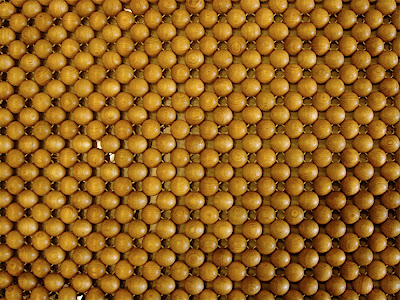Previously, I have mentioned that the weaving technique we used in building the beaded fullerenes is basically the so-called "Right-Angle Weave"(RAW, 直角編織法). But why right angles, we do not have any right angle in our beaded molecules. Indeed, originally the right angle is used to construct 4-beaded groups repeatly, which will lead to right angles in the resulting structure. Here is a seat pad (椅墊) I bought today. Chuang also has one in his office. This seat pad clearly show why this technique is called the RAW.










